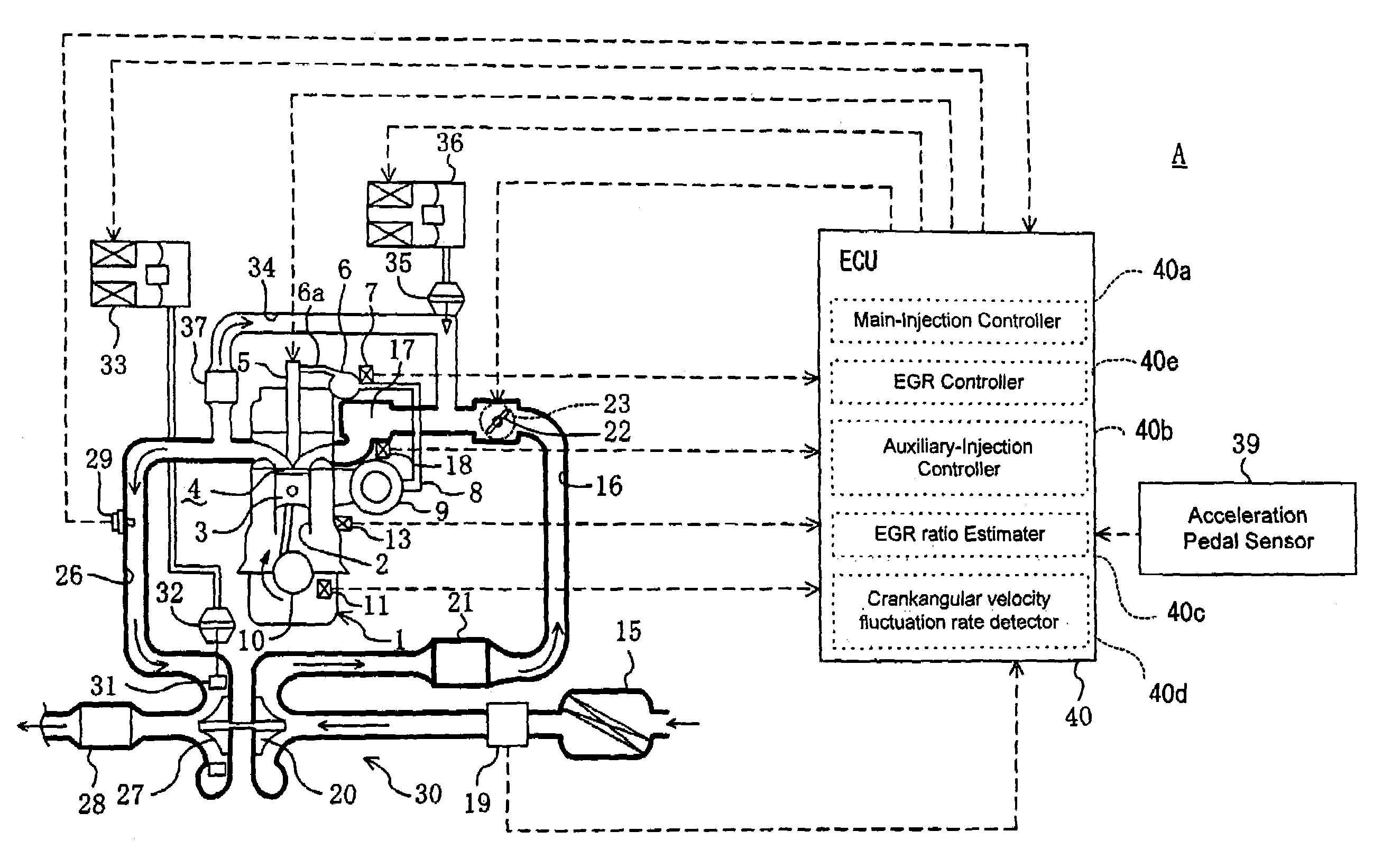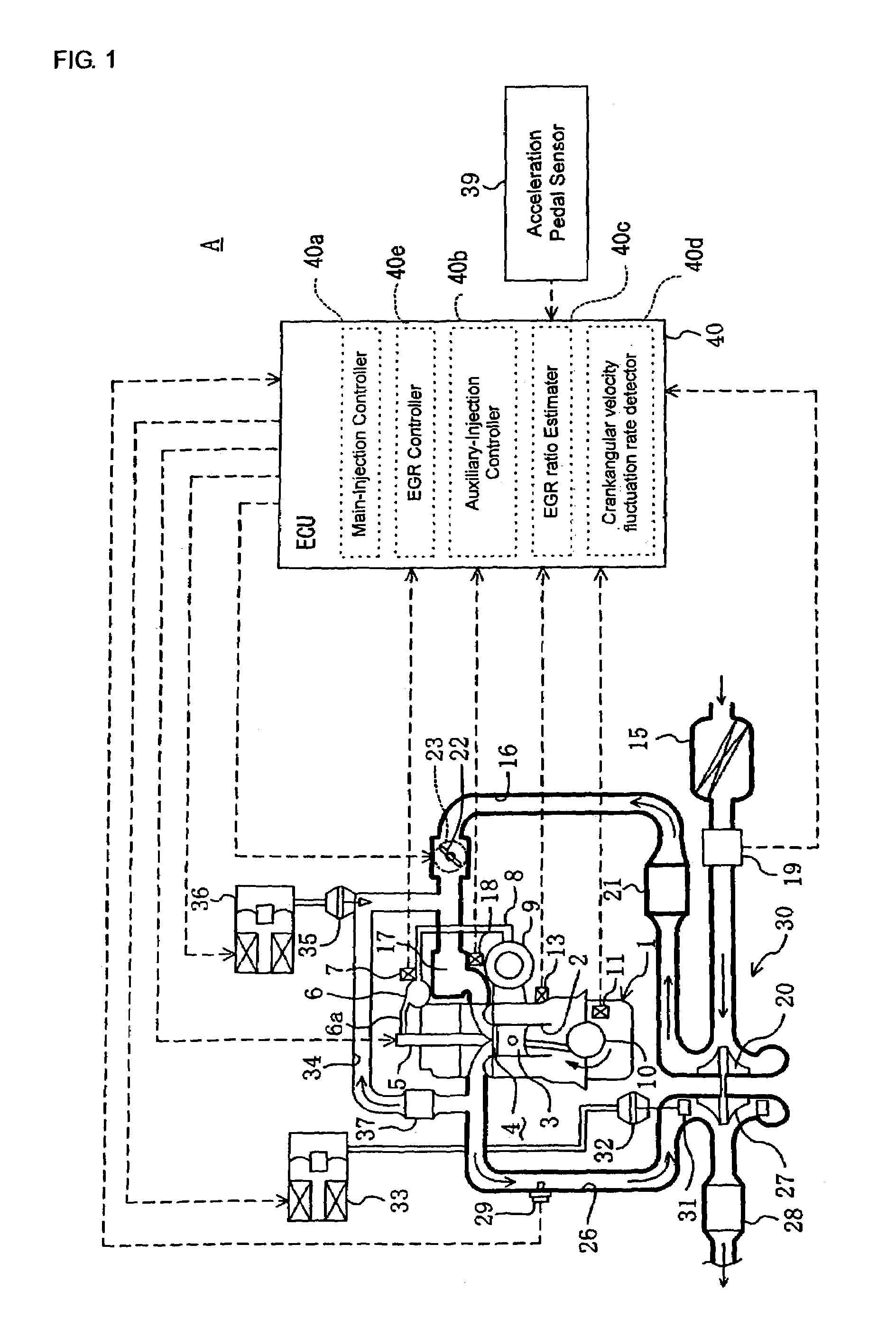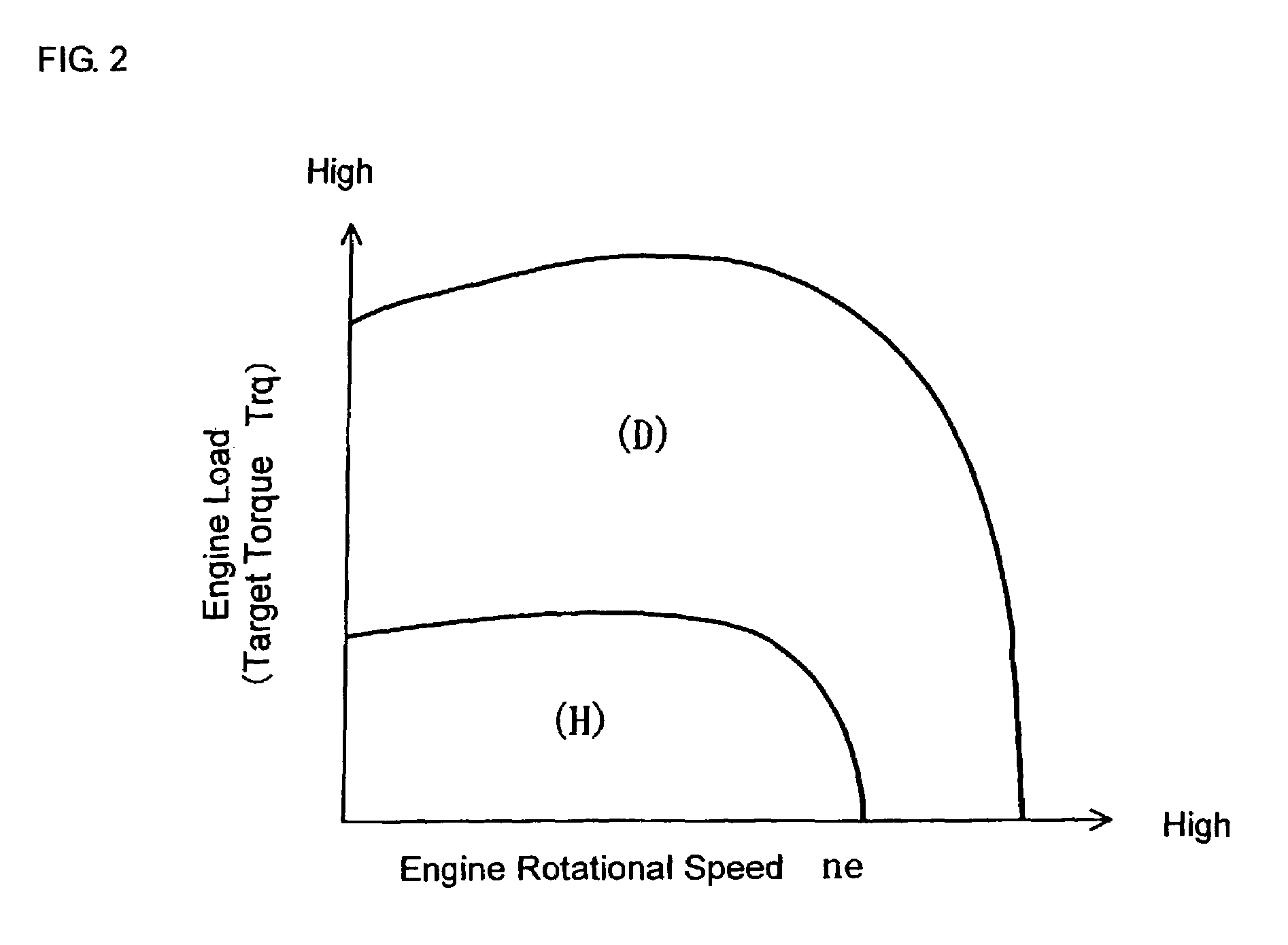Combustion control apparatus for an engine
a combustion control and engine technology, applied in mechanical devices, electric control, machines/engines, etc., can solve the problems of reducing the amount of oxygen in the intake air, nox and soot being produced by oxygen shortage, and it is difficult to reduce both nox and soot simultaneously during diesel combustion, so as to improve fuel efficiency
- Summary
- Abstract
- Description
- Claims
- Application Information
AI Technical Summary
Benefits of technology
Problems solved by technology
Method used
Image
Examples
Embodiment Construction
[0058]Preferred embodiments of the present invention will be described with reference to the accompanying drawings.
[0059]FIG. 1 illustrates a configuration of a combustion control apparatus A for an engine in accordance with a preferred embodiment of the present invention. Identified by reference numeral 1 is diesel engine mounted in a vehicle. The engine 1 comprises a plurality of cylinders 2 only one of which is illustrated for convenience. A piston 3 is fitted within each cylinder 2, so as to reciprocate in a vertical direction, respectively. The piston 3 defines a combustion chamber 4 within each cylinder 2. An injector 5 (fuel injection valve) is arranged at a roof of the combustion chamber 4. The injector 5 injects fuel at high pressure directly into the combustion chamber 4 from injection bores at the tip of the injector 5. The proximal end of the injector 5 for each cylinder 2 is connected to a common fuel delivery pipe 6 (a common rail) via fuel delivery pipes 6a only one o...
PUM
 Login to View More
Login to View More Abstract
Description
Claims
Application Information
 Login to View More
Login to View More - R&D
- Intellectual Property
- Life Sciences
- Materials
- Tech Scout
- Unparalleled Data Quality
- Higher Quality Content
- 60% Fewer Hallucinations
Browse by: Latest US Patents, China's latest patents, Technical Efficacy Thesaurus, Application Domain, Technology Topic, Popular Technical Reports.
© 2025 PatSnap. All rights reserved.Legal|Privacy policy|Modern Slavery Act Transparency Statement|Sitemap|About US| Contact US: help@patsnap.com



